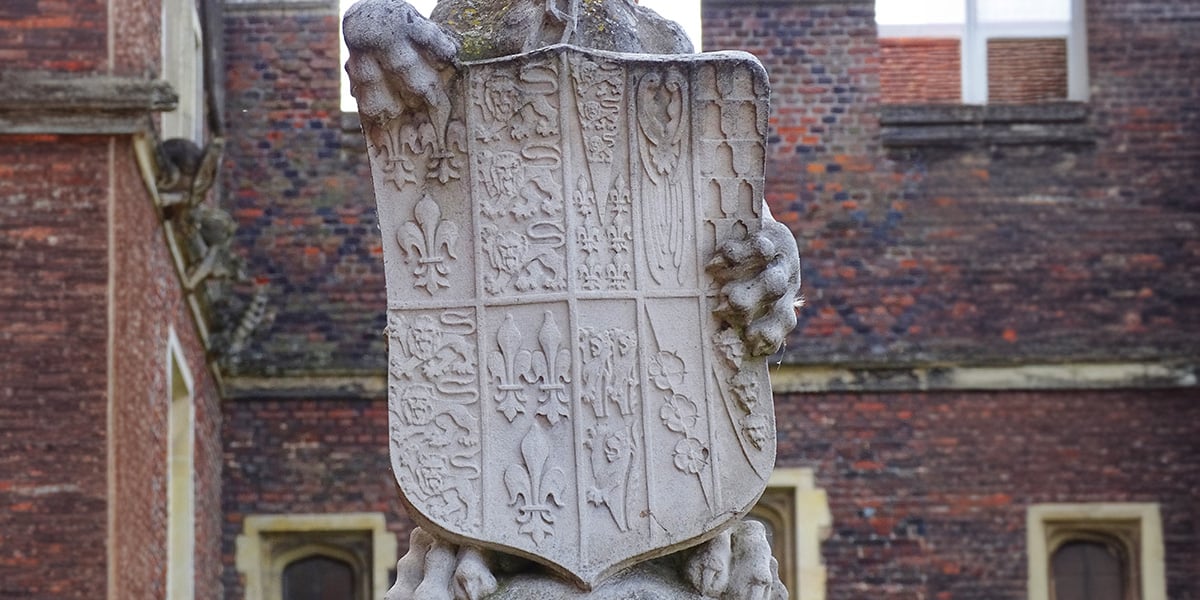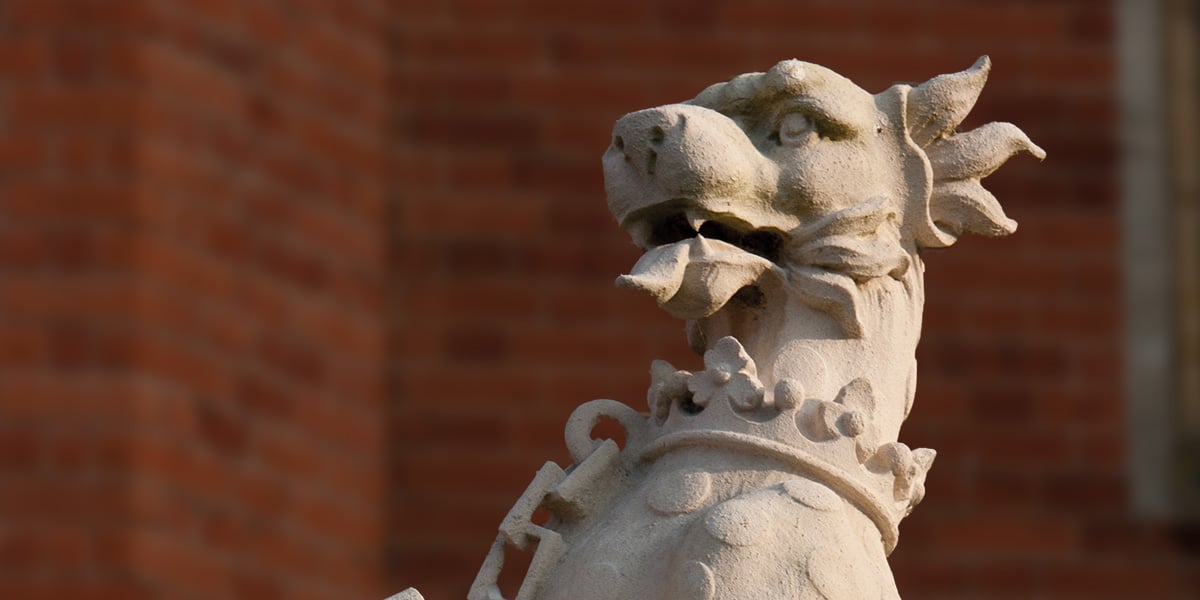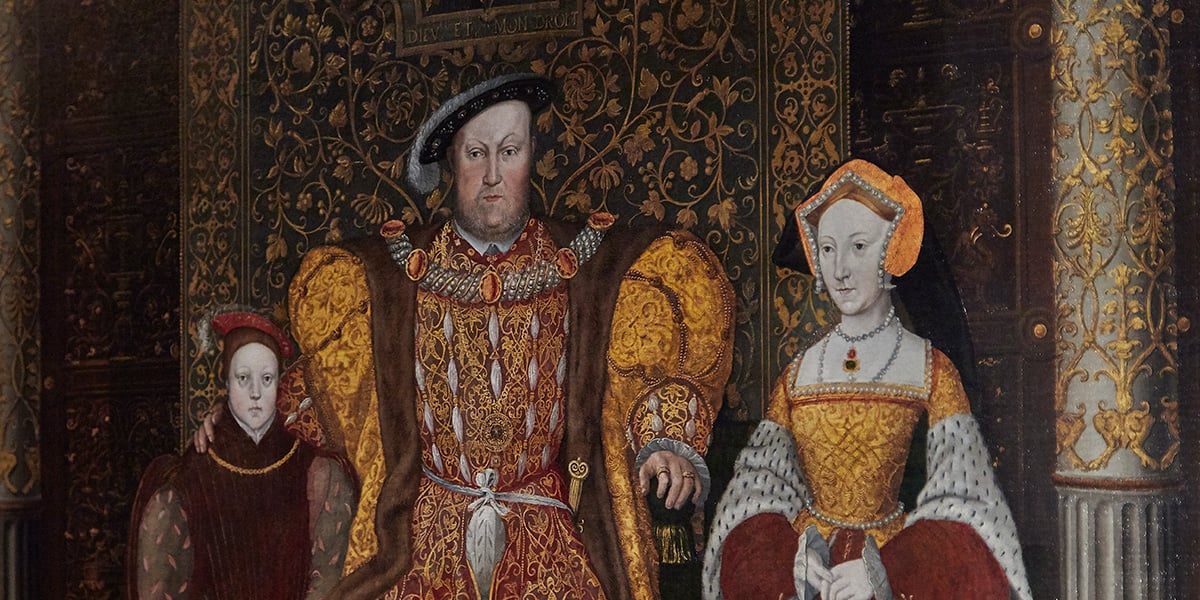
A Coat of Augmentation

The Queen’s Panther
The Queen’s Panther on the Moat Bridge stands across from the Tudor Dragon and is the final Queen’s Beast visitors meet before entering the palace. In heraldry, panthers are often depicted as ‘incensed’, which means flames emanate from their mouth and their ears symbolise their fragrant breath. According to legend, the panther’s breath attracted all animals except the resistant dragon, making this an apt pairing.
Bestowed upon Jane Seymour by Henry VIII, the panther was seen as a representation of the House of Tudor’s recent lineage, owing to its association with Henry VII. Following in his father’s footsteps, Henry VIII utilised the Queen’s Panther to affirm his wife’s legitimacy and the legitimacy of any progeny from their union. Emphasising this, the Queen’s Panther holds a shield bearing the combined Coats of Arms – also known as impaled Arms – of Henry VIII and Jane Seymour.

Husband and Wife
In the realm of heraldry, when spouses bear distinct family Coats of Arms, various methods are employed to merge them. If the wife has her own family’s Coats of Arms, the couple’s heraldic symbols are intricately combined during their lifetime.
When a married couple has different family motifs, they usually combine them on a shield such as the shield displayed in the grip of the Queen’s Panther. If the wife is not an heir, in the case of Jane Seymour who had six biological brothers and three biological sisters, the couple can join the symbols by splitting the shield down the middle with a line.
The dexter, or the left side of the shield when facing towards it, splits Henry VIII’s Arms into four – an amalgamation of those belonging to his ancestors before him – kings and queens, lords and ladies – thus proving his rightful position on the English throne. The sinister, or the right side of the shield, features Jane Seymour’s Coat of Augmentation, which portrays her descent from five different families who bore Coats of Arms.
If a husband remarries, he needs to replace his earlier wife’s symbols with the new, as it is considered incorrect to use the symbols of two wives at the same time. This approach is represented in the nature of the heraldic panther itself, whose original appearance was a leopard that represented the Arms of Anne Boleyn, Henry VIII’s second wife. The king married Jane Seymour in the same year as Anne’s Boleyn’s execution, which led to Henry VIII ordering that second wife’s Arms and badges be replaced or destroyed.
To save money whilst simultaneously honouring his new queen, Henry VIII ordered Anne Boleyn’s leopards to be altered in order for them to become the Seymour Panther and the Queen’s Panther. The latter serves as the sinister supporter of her Arms on the Moat Bridge, meaning it appears on the viewer’s right-hand side when approaching the palace. Like the heraldic leopard, the panther is typically portrayed with blue and red spots, which would have initially been painted.
Sadly, the Coat of Arms had to be revised once more when Jane Seymour passed away following the challenging birth of Prince Edward, later Edward VI (r.1547–53). Jane Seymour was laid to rest on 12 November 1537 at St George’s Chapel in Windsor Castle, and was the only wife of Henry VIII to receive a queen’s funeral.
Two years later, the king married Anne of Cleves and although the Coat of Arms was modified once more for his new queen, the royal beasts at Hampton Court Palace were not adapted.
DISCOVER THE ROYAL TUDOR BEASTS

© Historic Royal Palaces 2025 Produced under licence from Historic Royal Palaces Enterprises Limited
